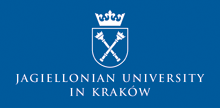Speaker
Description
GATE is a Geant4 application dedicated to medical physics applications. This open-source software is developed by the international OpenGATE collaboration initially [1] for nuclear medicine (SPECT, PET). Since the release V6 [2], GATE was extended to a broader range of simulations in the field of medical physics, in particular for dosimetry applications [3]. This unique platform allows users to conveniently share code of Geant4 simulations while also allowing simple simulation scripting via macro files. GATE has been used to perform a wide range of radiation therapy dosimetry simulations, including external photon therapy, hadrontherapy (proton, carbon, helium), internal radionuclide therapy, and various imaging applications: not only PET, SPECT and CT, but also proton-CT, prompt-Gamma imaging or Compton-Camera.
Recently, a new extension of GATE has been proposed to perform simulations of Compton cameras. The developed module is designed so that the interaction information of the particles in the specified detector volumes is stored and digitized to simulate their response. Several digitization processors have been implemented to reproduce the performance of the most commonly employed detectors such as strip detectors, pixelated and monolithic scintillator crystals. Additional tools have been included to facilitate the access to ground-truth information with the aim of recovering the ideal Compton kinematics and characterizing the possible sources of degradation in an experimental device. The module has been successfully validated against experimental data taken with a Compton Camera prototype based on LaBr3 continuous crystals coupled to SiPMs, built at IFIC-Valencia. On the other hand, the developed tools have proven to be helpful to identify and reduce the different sources of degradation found in the acquired data. The versatility of the module has been proven through a preliminary simulation study of the comparison between the performance of two different prototypes.
During the presentation, a short overview of GATE capabilities will be given, followed by a description of the new Compton Camera module, that will be available in the next GATE release.
References
[1] Jan S., … Morel C. GATE: a simulation toolkit for PET and SPECT. Phys Med Biol. Oct 7;49(19):4543-61. 2004
[2] Jan S., … Buvat I. GATE V6: a major enhancement of the GATE simulation platform enabling modelling of CT and radiotherapy. Phys Med Biol. 21; 56(4):881-901. 2011
[3] Sarrut D. et al. “A review of the use and potential of the GATE Monte Carlo simulation code for radiation therapy and dosimetry applications.” Med Phys, 41(6):064301. Jun 2014.

